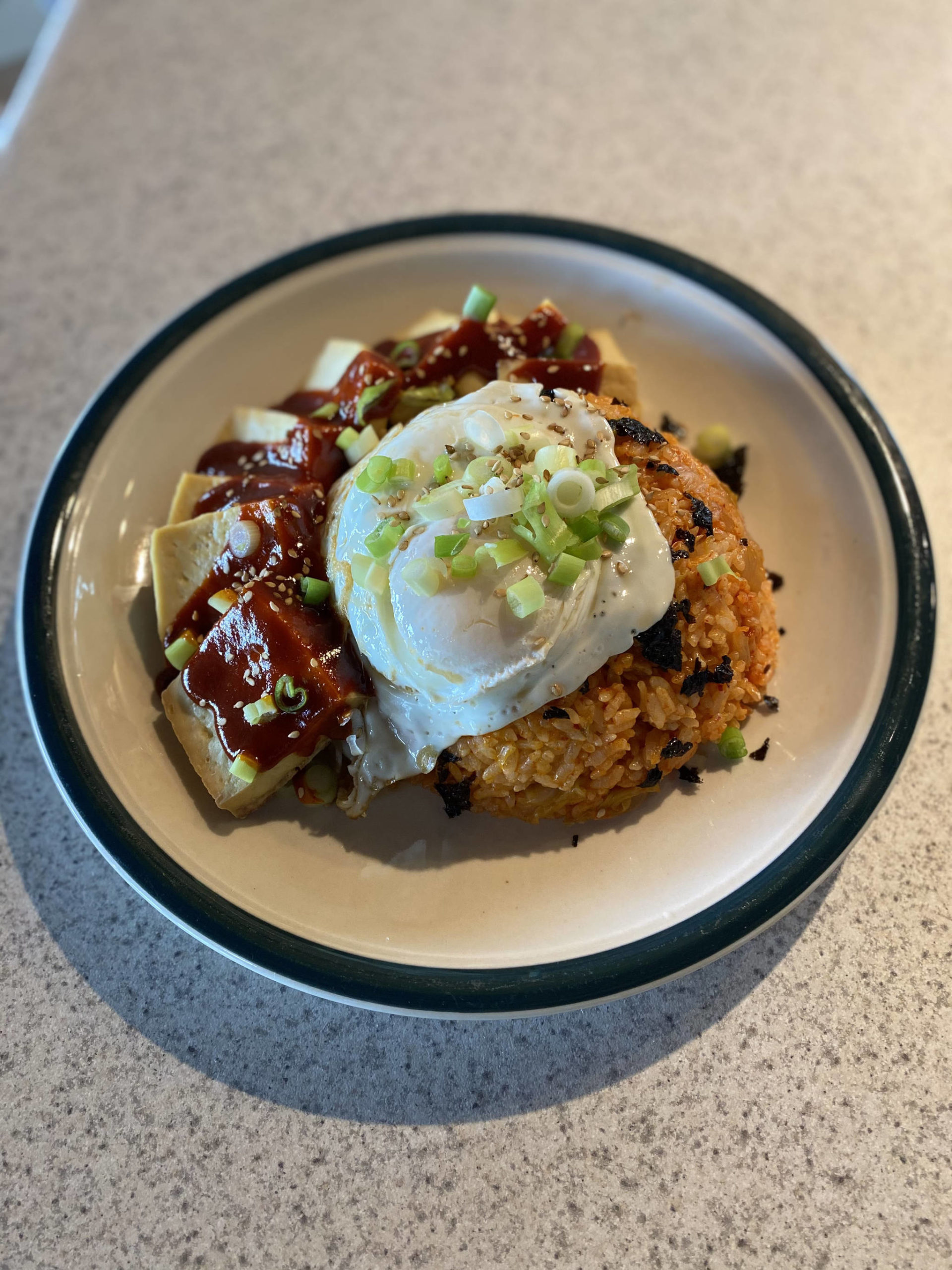By Tressa Dale
For the Peninsula Clarion
The first time I ever tried a Korean meal (beyond Korean spicy ramen, which is still one of my favorite junk meals ever) I was in a small restaurant called NaRa in Monterey, California.
I had just started my 63-week Korean language course at the Defense Language Institute and, after having just finished a section on Korean food, I was intrigued.
I ordered a dish my teaching team agreed was quintessential and an appropriate ambassador for Korean food: fermented soybean paste stew. They brought out an array of small plates of side dishes, called banchan, which included cabbage kimchi, cucumber kimchi, fried fish cakes, sticky braised black beans, seasoned dried tiny anchovies, acorn jelly, and a few others I’m sure I forgot.
Then they brought out the boiling soup in a black earthenware bowl, and a little bowl of sticky rice. The first scalding spoonful of that salty stew burned my mouth and changed my world forever.
In the 13 years since that day, I have learned how to make many Korean dishes, including all the banchan I listed above and more. It has become so much a part of my life that the soybean paste stew is my now 18-month-old son’s favorite dinner, so I make it almost every week, speaking Korean to him as I go.
It brings me immense joy to teach him (and anyone else who will listen) all about Korean food, language and culture.
This dish is another beloved, everyday Korean meal that features the most iconic of Korean staples: kimchi.
All these ingredients can be easily found in our local grocery stores, so there’s no need to hike up to Anchorage to visit one of the Korean markets.
Kimchi Fried Rice
2 cups short grain rice, cooked and cooled completely (in my opinion the best possible use for the leftover rice that’s gone hard in the fridge)
1 cup chopped cabbage kimchi, retain as much of the liquid as possible
2 teaspoons minced garlic (fresh is best)
3 stalks green onion
A few sheets of seasoned seaweed paper
2 tablespoons sesame oil
1 teaspoon soy sauce
½ teaspoon toasted sesame seeds
Korean red pepper paste (start with 1 teaspoon for very mild and add more to increase spiciness)
One egg per person
Heat a large pan (a wok is best) over medium-high heat and stir-fry the kimchi and garlic in a little vegetable oil for 3 minutes.
Add the rice, soy sauce, the chopped green onions (reserving a small portion for garnish) and red pepper paste and stir-fry until the rice is hot and evenly coated. A rice spoon or flat rubber spatula works best because the goal is to keep the rice as fluffy and separated as possible. Think about cutting through the rice instead of stirring.
Taste the rice and add more red pepper paste if desired.
When you’re satisfied, turn off the heat and add the sesame oil.
For plating, spoon into a bowl and press down, then flip over onto a plate to create a dome shaped pile.
Top with a fried egg (sunny side up is traditional but I like over-easy), crushed seaweed paper, the remaining green onions, and sesame seeds.
I served this dish with a side of baked tofu, covered in a sauce made with 2 teaspoons red pepper paste and 1 teaspoon each soy sauce and sesame oil, but it can be, and often is, served as a stand-alone meal.
Before I tried Korean food my palate was extremely limited.
I was, like many of us are, intimidated by unknown flavors and ingredients, and I was genuinely content with my continental menu of pizza, pasta, baked chicken and the occasional taco night.
I think the most “exotic” thing I had ever tasted up till that point was a California roll, but that first meal, that first time I dove headfirst into the unknown, changed who I was forever. It set me on a path toward culinary school and sent me on my never-ending search for new flavors and new ingredients.
If you are one of the many who prefers to stay in your comfort zone, I urge you to try this dish. You might hate it, but if you don’t, it might change your life too.

